- JST Home
- /
- Strategic Basic Research Programs
- /
 PRESTO
PRESTO- /
- project/
- Creation of Life Science Basis by Using Quantum Technology/
- [Quantum Bio] Year Started : 2018
[Quantum Bio] Year Started : 2018
Ryuji Igarashi
Creation of “composite quantum sensors”
Researcher
Ryuji Igarashi
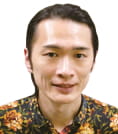
Group Leader
Institute for Quantum Life Science
National Institutes for Quantum and Radiological Science and Technology
Outline
This research will propose and develop a measurement technique of mechanical property of biological cell/tissue with the non-contact, non-labeling manners, and sub-cellular spatial resolution, based on inelastic light scattering by acoustic phonon. I will develop novel schemes for measurement and analysis, and aim to visualize spatial distribution of elastic property within tissue. The technique will be applied to mechanobiology and regenerative medicine.
Taro Ichimura
Hyperdimensional Mechanical Imaging Based on Acoustic Phonon Measurement
Researcher
Taro Ichimura

Associate Professor
Institute for Open and Transdisciplinary Research Initiatives
Osaka University
Outline
This research will propose and develop a measurement technique of mechanical property of biological cell/tissue with the non-contact, non-labeling manners, and sub-cellular spatial resolution, based on inelastic light scattering by acoustic phonon. I will develop novel schemes for measurement and analysis, and aim to visualize spatial distribution of elastic property within tissue. The technique will be applied to mechanobiology and regenerative medicine.
Goro Oohata
Development of density matrix spectroscopy using quantum tomography
Researcher
Goro Oohata

Associate Professor
Graduate School of Science
Osaka Prefecture University
Outline
In this research, I propose and develop “Density matrix spectroscopy” which is a new spectroscopic method that incorporates the non-linear spectroscopy measurement and analysis of quantum tomography used in quantum information technology. Although the conventional techniques could only obtain limited information on quantum coherence in a material, the new method makes it possible to quantitatively evaluate the quantum state of the material by directly obtaining the density matrix. I will approach the secret of quantum in biological phenomena such as photosynthesis process by observing “the density matrix of the biological material”.
Toyoyuki Ose
Analysis of the quantum properties of amines in biomolecules
Researcher
Toyoyuki Ose

Professor
Faculty of Advanced Life Science
Hokkaido University
Outline
The conventional methods such as X-ray crystallography and cryo-EM to analyze three dimensional structures of biomolecules hardly detect the information of hydrogen atoms. We can use neutron crystallography to discuss hydrogen behavior. Here I will focus on amines in biomolecules and try to observe quantum effects from amine nitrogen atoms. Nitrogen is widely used in life, partly because distinctive properties s of amine, such as the presence of lone pair, is essential for the function. I believe the analysis of the interaction between nitrogen atoms and hydrogen atoms of amines is the key to explain the significance of this element.
Akinori Kagawa
Experimental verification of nuclear spin quantum entanglement created by enzyme catalyzed chemical reactions
Researcher
Akinori Kagawa

Assistant Professor
Graduate School of Engineering Science
Osaka University
Outline
Nuclear spins can have long quantum coherences in a wet environment such as the human body. Recently, Fisher et al. have proposed new phenomenon which quantum entanglement between nuclear spins is spontaneously created by an enzyme catalyzed chemical reaction in the human body. It indicates that nuclear spin quantum entanglement is related to long-time scale life phenomena. The aim of this research is to experimentally verify the new phenomenon using nuclear magnetic resonance.
Kuniaki Konishi
Development of circular dichroism spectroscopy using vacuum ultraviolet coherent light
Researcher
Kuniaki Konishi
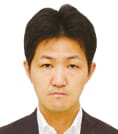
Associate Professor
Institute for Photon Science and Technology
The University of Tokyo
Outline
We will develop a technology to measure circular dichroism using coherent light in vacuum ultraviolet region generated by wavelength conversion of ultrashort laser pulse using artificial nanostructure smaller than the wavelength of light. We aim to realize new biomolecule label-free imaging technology and ultrafast dynamics measurement using probe of electron transition in the vacuum ultraviolet region as a probe, making use of the characteristics of coherent light which combines high spatial resolution and time resolution.
Toru Kondo
Microspectroscopy of biological quantum coherence: Do quantum effects really drive organisms?
Researcher
Toru Kondo
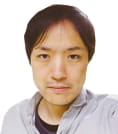
Lecturer
School of Life Science and Technology
Tokyo Institute of Technology
Outline
Quantum effects have been recently observed in biological systems, and suggested to enhance their functionality. However, it is not understood how a fragile quantum state can contribute to the function even in fluctuating and inhomogeneous biological conditions. This project aims to unveil mechanisms regulating biological quantum processes by a novel microscopic spectroscopy. I will quantitatively estimate quantum contributions to the biological function, and eventually lead to an answer to the simple but unsolved question whether quantum effects are really essential for organisms or not.
Michihiro Suga
Multi-dimensional structural analysis of photosynthetic membrane protein complexes using X-ray free electron lasers.
Researcher
Michihiro Suga
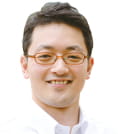
Associate Professor
Research Institute for Interdisciplinary Science
Okayama University
Outline
Recent progress in the structural biology is an emergence of XFEL which enables taking snapshots of enzymes in action with fs time resolution. This project aims to develop the method for analyzing structures by integrating multi-dimensional structural information with high atomic and fs time resolution, as well as the distributions of the charge and spin on the metal site. The method will be applied to reveal the photosynthetic reaction in membrane protein complexes, such as water oxidation reaction in the photosystem II. Structural insights obtained from this project will unveil the secret of nature for extremely high efficient light harvesting, energy transfer and water oxidation, which may serve as the blueprint for designing an Earth-friendly, bio-inspired catalyst by artificial photosynthesis.
Danev Radostin
Fast Synchronous Quantum Wave Modulation for High-Resolution Biological Observations
Researcher
Danev Radostin

Professor
Graduate School of Medicine
The University of Tokyo
Outline
This objective of this research is to develop and build a next generation cryo-electron microscope based on fast synchronous (FASY) wavefront modulation and detection. Predefined modulation parameter sets, called “recipes”, will be used to optimize the performance depending on the type of experiment and sample. Recipe-driven demodulation of the data will produce images with maximized spectral information coverage and improved resolution. The new method will provide almost unlimited experimental flexibility and substantial performance improvements for solving the atomic structures of macromolecules and elucidating the functioning of cells.
Masahiro Higashi
Investigation of moelcular mechanism of primary charge separation in photosynthetic reaction centre
Researcher
Masahiro Higashi
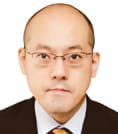
Associate Professor
Graduate School of Engineering
Kyoto University
Outline
This research reveals the efficient primary charge separation in green plant reaction centre by using an accurate molecular simulation method. The role of experimentally-observed coherence phenomena are also investigated.
Nobuhiro Yanai
Development of hyperpolarization nanospace for highly sensitive biomolecule observation
Researcher
Nobuhiro Yanai
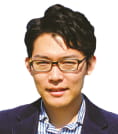
Associate Professor
Graduate School of Engineering
Kyushu University
Outline
Magnetic resonance imaging (MRI) is a powerful method in modern medical care. Nevertheless, it suffers from intrinsically limited sensitivity due to the low nuclear spin polarization at ambient temperature. One of the promising methods to overcome this limitation is dynamic nuclear polarization (DNP) based on photo-excited triplet state, in which the spin polarization of triplet electrons is transferred to that of nuclei. However, the successful examples of triplet DNP have been limited to solid organic crystals, and it remains difficult for such organic crystals to accommodate target molecules to be monitored. In this work, we develop a new concept “hyperpolarization nanospace” to realize highly sensitive observation of biomolecules in water at room temperature.
Lambert Neill
Quantum environments in photosynthesis
Researcher
Lambert Neill
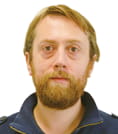
Researcher
Cluster for Pioneering Research
RIKEN
Outline
Light-harvesting in plants and bacteria occurs on ultra-fast time-scales. Because these timescales are so fast, quantum effects become important. These effects include coherent superposition of energy across multiple large molecules, as well as quantum coherence in the vibrations of the environment. In my research I will develop accurate models for both effects that can be used to explain which features are most important for efficient light-harvesting in biological systems, and whether they can be also implemented in artificial systems.
Chiduru Watanabe
Proton in Quantum Structural Biology: Synergistic Effect and Structure
Researcher
Chiduru Watanabe

Researcher
Center for Biosystems Dynamics Research
RIKEN
Outline
To accurately understand protein-ligand bindings and enzyme-catalyzed reactions in vivo, it is essential to clarify precise molecular behavior including position information of hydrogen atoms (protons). In this research, by synergistically fusing three-dimensional structure data from such as neutron diffraction and quantum mechanics known as the fragment molecular orbital method, I develop a new methodology for structural analysis: the “quantum structural biology” approach. Based on this approach, I reveal the proton behavior at the protein active center critically related to the biological phenomena.













